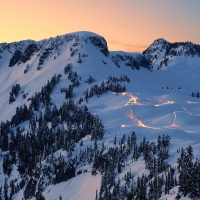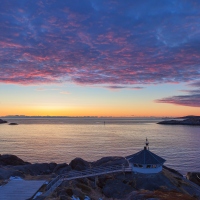An HDR Exercise
I crave high dynamic range but hate the dirty looks in the results created by many HDR software. Sometimes, even if I have plus and minus bracketed exposures of an image, I still end up using only a single one to make the final picture, because in many cases the time-consuming processing of bracketed exposures does not produce a better picture than a simple processing of a single image. I mean in many cases, but not always.
Thanks to the hot, hazy summer weather, which discourages me to do anything outdoor but stay home to kill time in front of my computer, I made a comparison of the HDR processing of bracketed exposures and single exposure. Here are three bracketed exposures of an image of the Seattle Gas Works Park:
The three exposures were processed first in Photomatix Pro 4.1, basically with a default setting of “Enhancer Smooth”. Then in PS CS6, the tonemapped image underwent lens distortion correction (ACR 7.0), and tonal contrast adjustment (Nik Software’s Color Efex 4.0). The whole process took me more than 20 minutes. Here is the final image:
For comparison, I used the slightly overexposed image above (the last one of the three) as the base, and from Lightroom 4.1 I processed it in Topaz Adjust, and then made some adjustments (including lens distortion correction). The process took me less than 10 minutes. Here is the final image:
Aside from the differences in color temperature and hues, the two images are very close to each other in terms of HDR effect. The point is, if you can achieve the same effect with one exposure and by one process in less than half the time of the other process, then why bother taking three exposures and go through another process in more than 20 minutes? Besides, combining bracketed exposures often creates ghost shadows.
Newer cameras today produce images of greater and greater dynamic range. I was told that the highly praised Nikon D800 has an unprecedented dynamic range of over 14 stops (2 stops more than the best Canon counterpart)! You can expose for the sky and don’t worry about the underexposed ground, which can be recovered in full detail later. OK, then, say bye-bye to bracketed exposure.
I have written on single-exposure HDR pictures in an earlier blog: https://dannyxu.wordpress.com/2011/08/16/hdr-or-not-hdr/






